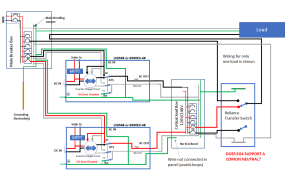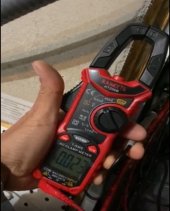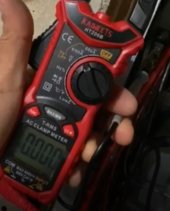BajaOffGrid
New Member
- Joined
- Oct 4, 2022
- Messages
- 32
Hi All, hoping for some guidance. Read through most of this thread, watched all of wills videos, and am following his instructions/diagrams as well as the grounding/bonding one from Filterguy(my setup is closest to slide 2) and am still a bit puzzled.
I have (1) 6500EX + 15kwh Eg4 48v server racked batteries + 4000w array. Completely off-grid.
I am planning to use my generator (I believe floating ground) as a backup to charge the batteries through the inverter. I also would like to have the option to wire/plug the generator directly to the panel (in case the inverter stops working). Generator: Predator 3500 inverter/generator.
Questions:
1. Do I need a transfer switch or can I just wire a receptacle for my generator into the main panel for if/when I should ever need to bypass the inverter?
2. How do I ground? from what I have gathered I need to ground the main panel with a "system bonding jumper" to a grounding rod(or chassis?) but a professional should do this piece (not very clear on that).
3. Does the generator need a Neutral Ground Bonding Plug?
4. For the "NG Bond Disabled" in the diagram (slide 2) is this automatic, a software setting, or a manual configuration?
Thank you so much!!!
I have (1) 6500EX + 15kwh Eg4 48v server racked batteries + 4000w array. Completely off-grid.
I am planning to use my generator (I believe floating ground) as a backup to charge the batteries through the inverter. I also would like to have the option to wire/plug the generator directly to the panel (in case the inverter stops working). Generator: Predator 3500 inverter/generator.
Questions:
1. Do I need a transfer switch or can I just wire a receptacle for my generator into the main panel for if/when I should ever need to bypass the inverter?
2. How do I ground? from what I have gathered I need to ground the main panel with a "system bonding jumper" to a grounding rod(or chassis?) but a professional should do this piece (not very clear on that).
3. Does the generator need a Neutral Ground Bonding Plug?
4. For the "NG Bond Disabled" in the diagram (slide 2) is this automatic, a software setting, or a manual configuration?
Thank you so much!!!
Last edited:





